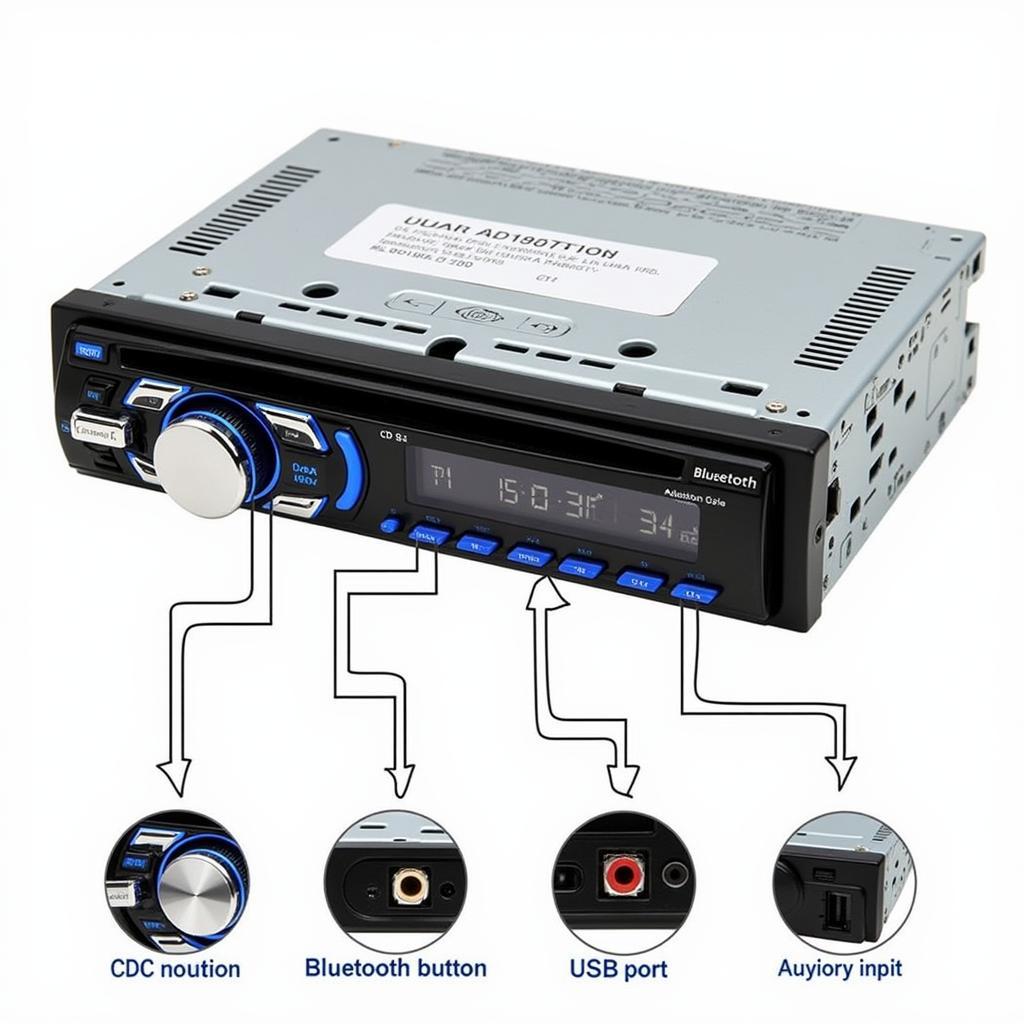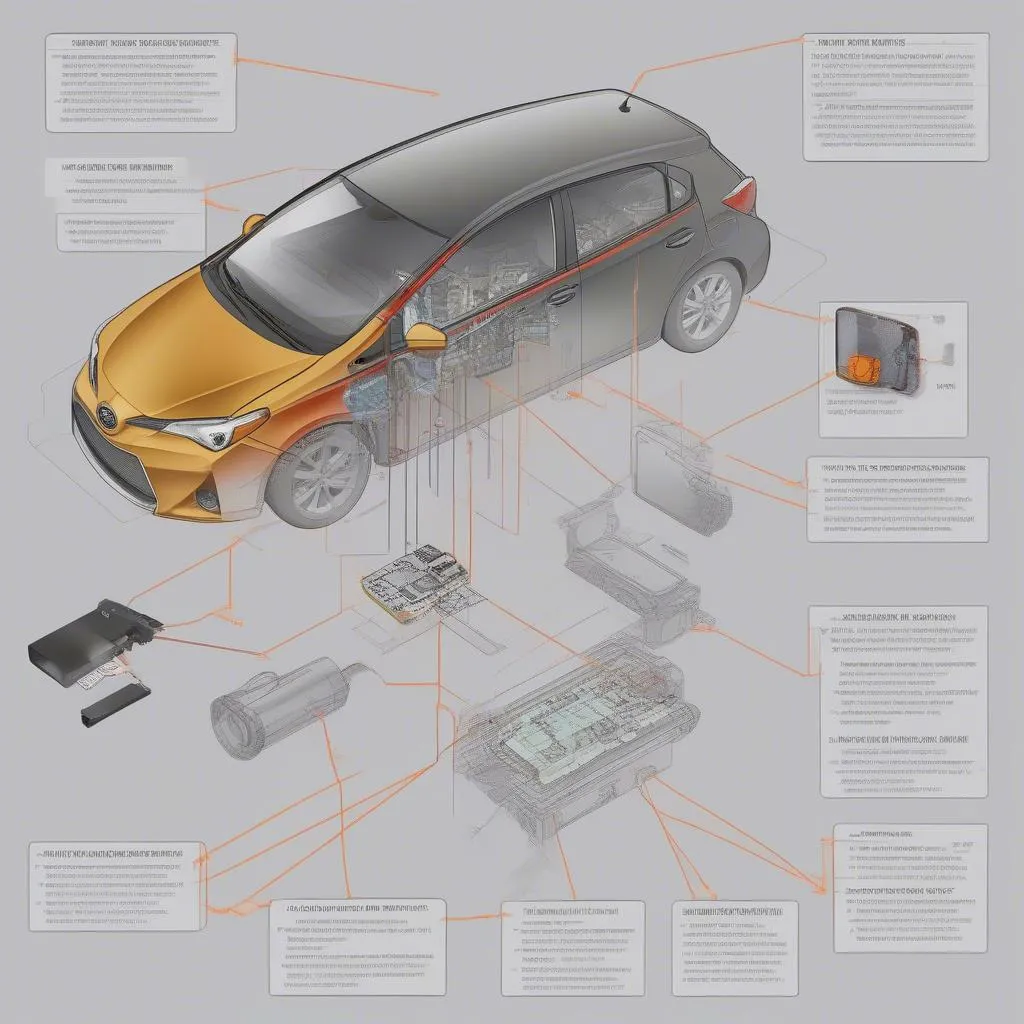The 1990 BMW E30 brake warning light can be a frustrating issue, signaling potential problems ranging from low brake fluid to more serious issues like worn brake pads or a faulty ABS system. Understanding the causes and knowing how to troubleshoot this warning light is crucial for maintaining your E30’s safety and performance. This comprehensive guide will walk you through the common causes, diagnostic procedures, and potential solutions for the 1990 BMW E30 brake warning light.
Understanding the E30 Brake Warning Light
The brake warning light on your E30’s dashboard is designed to alert you to potential issues within the braking system. It can illuminate for various reasons, and it’s important to understand what each scenario might indicate. Ignoring this warning can lead to significant safety risks and potentially costly repairs.
Common Causes of the 1990 BMW E30 Brake Warning Light
Several factors can trigger the brake warning light in a 1990 BMW E30. Identifying the root cause is the first step towards resolving the issue. Here are some of the most common culprits:
- Low Brake Fluid: This is often the simplest explanation. Low brake fluid levels can indicate a leak somewhere in the system.
- Worn Brake Pads: As brake pads wear down, they reach a point where they trigger a sensor that activates the warning light.
- Faulty Brake Sensor: The brake pad wear sensors themselves can sometimes malfunction, triggering the light even when the pads are still good.
- Parking Brake Engaged: Sometimes the simplest explanation is the right one. Ensure the parking brake is fully disengaged.
- ABS Issues: Problems with the Anti-lock Braking System (ABS) can also trigger the brake warning light. This often requires more advanced diagnostics.
- Brake Master Cylinder Problems: Issues within the master cylinder, such as internal leaks or seal failures, can also cause the warning light to illuminate.
Diagnosing the Problem: A Step-by-Step Guide
- Check the Parking Brake: Begin with the simplest check. Ensure the parking brake is fully released.
- Inspect Brake Fluid Level: Open the hood and locate the brake fluid reservoir. Check the fluid level. If it’s low, top it off with the correct DOT specification fluid.
- Inspect Brake Pads: Visually inspect the brake pads through the wheel spokes. If they appear thin, it’s time for a replacement.
- Check for Leaks: Look for signs of brake fluid leaks around the brake lines, calipers, and wheel cylinders.
- Test the Brake Pedal: Pay attention to the feel of the brake pedal. Does it feel spongy or soft? This can indicate air in the lines or a master cylinder issue.
- Consult a Professional: If you’re unable to identify the cause or if the issue persists, it’s recommended to consult a qualified mechanic specializing in BMW E30s.
Solutions for Common Brake Warning Light Issues
- Low Brake Fluid: Top off the brake fluid and monitor the level closely. If the level continues to drop, have a mechanic check for leaks.
- Worn Brake Pads: Replace the brake pads with high-quality replacements.
- Faulty Brake Sensor: Replace the faulty sensor.
- ABS Issues: Diagnosis and repair of ABS problems often require specialized diagnostic tools. Consult a qualified mechanic.
- Brake Master Cylinder Problems: Master cylinder repair or replacement is best handled by a professional.
What does the red brake light mean on my 1990 BMW E30?
The red brake light typically indicates either low brake fluid or worn brake pads. It can also signify issues with the parking brake or ABS system.
Can I drive my E30 with the brake warning light on?
Driving with the brake warning light on is not recommended. It can be dangerous and could lead to brake failure.
How much does it cost to fix a brake warning light issue on a 1990 BMW E30?
The cost of repair varies depending on the underlying cause. It can range from a simple top-off of brake fluid (minimal cost) to more expensive repairs like replacing the master cylinder or ABS components.
“Regular brake maintenance is crucial for any vehicle, especially a classic like the E30. Don’t ignore warning lights – they’re there for a reason.” – Hans Dieter Schmidt, Master BMW Technician
“Addressing brake issues promptly can prevent more significant and costly repairs down the road. A little preventative maintenance goes a long way.” – Franziska Müller, Automotive Engineer
Conclusion
The 1990 BMW E30 brake warning light should never be ignored. Understanding the potential causes and following the diagnostic steps outlined in this guide can help you identify and address the issue promptly. If you’re unsure about any aspect of the diagnosis or repair process, consult a qualified mechanic specializing in BMW E30s. Prioritizing your E30’s brake system ensures safe and enjoyable driving for years to come.
FAQ
-
What is the most common cause of the E30 brake warning light? Low brake fluid or worn brake pads are the most frequent culprits.
-
How often should I check my E30’s brake fluid level? It’s a good practice to check your brake fluid level at least once a month.
-
Can I replace my E30’s brake pads myself? Yes, with the proper tools and knowledge, you can replace your E30’s brake pads.
-
How can I tell if my E30’s ABS system is malfunctioning? Often, a malfunctioning ABS system will trigger the ABS warning light in addition to the brake warning light.
-
Where can I find a qualified mechanic to work on my 1990 BMW E30? Look for independent BMW specialists or reputable European car repair shops in your area.
-
What type of brake fluid should I use in my 1990 BMW E30? Consult your owner’s manual for the correct DOT specification.
-
Is it safe to drive my E30 if the brake warning light comes on intermittently? No, it’s best to address the issue immediately, as intermittent warning lights can indicate a developing problem.



